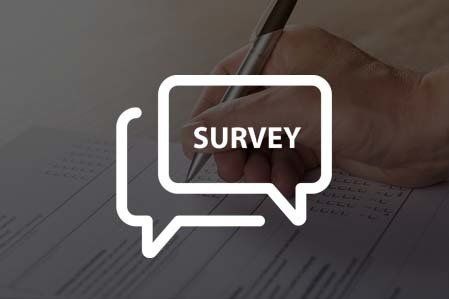+1-800-298-3165
What to post on LinkedIn during the coronavirus pandemic
Rebecca Appleton • 27 March 2020
What to post on LinkedIn

he last few weeks have seen an enormous amount of change to our daily routines and business practice. For many firms, marketing must go on but knowing how to deftly navigate what is a challenging and complex landscape is difficult.
To help brands keep their social media flowing, LinkedIn has issued a series of pointers designed to help brands establish an appropriate approach to communicating with their audiences.
Its report says that “Conversations on LinkedIn typically reflect what’s happening in the business world. In January and February, the top two hashtags on LinkedIn were #marketing and #leadership. So far in March, the top two hashtags are #coronavirus and #COVID-19.
On LinkedIn the number of articles about coronavirus increased by 17X between February 1 and March 17. The biggest topics of discussion we’ve seen on LinkedIn are perspectives and advice on remote working, social distancing, crisis management, business continuity, online learning, collaboration and more. For example, “remote working” searches on LinkedIn Learning tripled in March.
We’re seeing brands work through how they communicate with their audiences, from employees to customers, and have observed a set of emerging best practices.”
Read on for easy-to-implement suggestions and best practises to adopt right now to help you stay connected, not just with your customers but with your team too.
1. Tell others about how you’re handling things
LinkedIn’s first recommendation for brands is to share their experiences – if you have sent your team home to work remotely for example, you could cover that in an update, letting your audience know how you’re getting on, the things you have learned and any tips you may have to help others going through the same thing.
If you’ve discovered a wonderful app or tool that has made life easier, such as a service for video calling or team collaboration, you could also share that in your post. On the flip side, if you’re still figuring things out, why not ask for recommendations? Posting a quick question asking others how they are finding it and what works for them is a great conversation starter and could be a treasure trove of useful recommendations.
2. Use your posts to recognise your team members
Your posts are a gray way to recognise team members who have gone above and beyond in difficult times. You could share a throwback team photo or share a piece of feedback received from a client about a particular staff member. Of course, the standard best practise rules apply here; be authentic and transparent.
3. Be active and comment on other posts
Don’t forget the social element of social networking – that means taking time to respond to posts, like and share. Ask questions or leave words of encouragement, provide suggestions and recommendations where you can be helpful to someone within your network. Commenting also means that you’ll become more visible, raising your profile with connections of your connections.
4. Stay informed
LinkedIn has also stressed the importance of seeking out trusted news sources and says it is working hard to ensure that accurate iformation appears in your feed. It advises, “LinkedIn's team of editors are bringing members trusted news featuring reliable updates from experts including the World Health Organization and the Centers for Disease Control and Prevention. Following the latest news and simply sharing articles to your feed is another great way to take part in the conversation, and engage and inform your LinkedIn community.”
Here, be sure that you are sharing information from trusted sources. Act responsibly and consider if you trust the source of the news before sharing with your connections. Use hashtags as you would normally to aid with post and information discovery.
5. Be open about how you’re addressing challenges
Almost every business has been affected to some extent by the spread of coronavirus and it is likely that you are one of them. You may have had to switch to remote working or change timeframes for services. It could be that you are no longer able to offer some or have pivoted, and launched new ways to support your customers at this time.
Your social media pages are the perfect place to address how you are facing these challenges and the actions you are taking. Be open about sharing any changes that will impact on the customer experience, such as a switch to email only support or reduced customer service hours.
Share this post:
Popular Posts

by Eazi Business
•
21 September 2021
Starting a new business is not easy. There are a lot of things to consider and decisions to make. It’s also important to avoid investing your hard earned money in a business that does not give you a great return. Small mistakes in the early stages can manifest themselves into bigger problems further down the road.

by Rebecca Appleton
•
16 August 2019
We are incredibly proud to announce that Eazi-Apps have been named a Silver Stevie® award winner for International Company of the Year 2019. It is an honour and a delight to accept this award from the 16th Annual International Business Awards® which will be celebrated in Vienna later this year.

by Eazi Business
•
31 December 2018
Starting a new business can be time-consuming and difficult. The first challenge is to find or build a great product or service that your customers need. You will also need to create a brand, develop marketing collateral, design a website, find customers, and develop a range of new skills. You will most likely have to hire a team of experts to help you get started.
Recent Posts

by Eazi Business
•
18 February 2025
For digital service providers, the difference between success and stagnation lies in creating long-term value for clients. Moving beyond one-time projects and building lifetime client relationships can transform your business into a reliable, recurring revenue model. Entrepreneurs who master this approach can achieve sustainable growth while helping their clients succeed in an ever-changing digital landscape.

by Eazi Business
•
17 February 2025
In today’s fast-paced digital world, businesses need powerful tools to create, manage, and optimise mobile applications efficiently. That’s why we’re excited to introduce the new Eazi-Apps CMS —a next-generation platform designed to streamline app development like never before. Built-in collaboration with a leading technology partner, this enhanced system offers cutting-edge features, improved usability, and exclusive benefits for our partners.

by Eazi Business
•
11 February 2025
The digital landscape continues to evolve, creating unprecedented opportunities for entrepreneurs. In 2025, the demand for digital services like website development, mobile apps, and SEO is higher than ever. If you’ve been considering launching your own digital services business, there’s no better time to start than now.
The Old School House, 65A London Rd, Oadby, Leicester LE2 5DN
Phone:
+44116 296 2488
Email: info@eazi-business.com
Co Reg: GB08364226
VAT No: 161014655
Copyright © 2022 Eazi-Business. All rights reserved.






